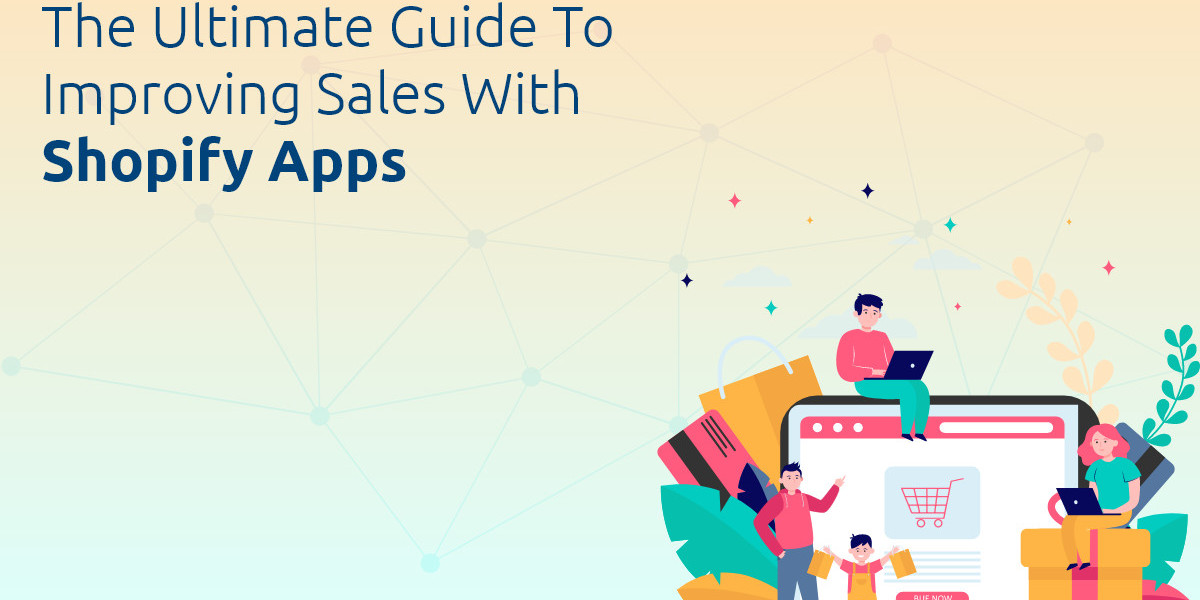In today’s competitive e-commerce landscape, optimizing sales is essential for the success of any online store. Shopify, one of the leading e-commerce platforms, offers a vast array of apps designed to enhance functionality, streamline operations, and drive revenue growth. Whether you’re just starting out or looking to scale your business, leveraging Shopify apps effectively can significantly boost your sales performance. Here’s a comprehensive guide to help you harness the power of top Shopify apps to improve your online store’s sales:
1. Identify Your Sales Goals
Before diving into the world of Shopify apps, it’s crucial to define your sales goals and objectives. Consider what specific outcomes you want to achieve, such as:
- Increasing Conversion Rates: Apps that optimize the checkout process, reduce cart abandonment, or implement effective upselling and cross-selling strategies.
- Boosting Average Order Value: Tools that encourage customers to spend more per transaction through product recommendations, bundles, or discounts.
- Improving Customer Retention: Apps for implementing loyalty programs, personalized marketing campaigns, and excellent customer support.
2. Explore Shopify App Categories
Shopify’s App Store offers a wide range of categories, each catering to different aspects of e-commerce operations. Some key categories to explore include:
- Marketing and Sales: Apps for email marketing, social media integration, SEO optimization, and conversion rate optimization.
- Customer Support: Tools for live chat, helpdesk support, customer feedback management, and reviews.
- Operations and Logistics: Apps that streamline inventory management, order fulfillment, shipping, and logistics.
3. Choose the Right Apps for Your Business
Selecting the right Shopify apps requires careful consideration of your business needs, budget, and existing infrastructure. Here are some tips for choosing the right apps:
- Read Reviews and Ratings: Evaluate user reviews and ratings in the Shopify App Store to gauge app reliability, ease of use, and customer support.
- Check Integrations: Ensure that the apps you choose integrate seamlessly with your Shopify store, existing tools, and third-party platforms.
- Trial Periods and Demos: Take advantage of free trials or demos offered by app developers to test functionality and compatibility before committing.
4. Optimize Customer Experience
A seamless and personalized customer experience is crucial for driving sales and fostering customer loyalty. Use Shopify apps to:
- Personalize Marketing Campaigns: Leverage data-driven insights to deliver targeted promotions, product recommendations, and personalized content.
- Implement Customer Feedback: Use apps for collecting and analyzing customer feedback to identify pain points and improve overall satisfaction.
- Offer Seamless Checkout: Install apps that simplify the checkout process, offer multiple payment options, and reduce friction to minimize cart abandonment rates.
5. Implement Effective Marketing Strategies
Effective marketing is key to attracting and retaining customers. Use Shopify apps to execute targeted marketing campaigns:
- Email Marketing Automation: Automate email campaigns for welcome sequences, abandoned cart reminders, and post-purchase follow-ups.
- Social Media Integration: Sync your Shopify store with social media platforms to reach a broader audience, run targeted ads, and engage with customers.
- Content Marketing: Use apps for blogging, SEO optimization, and content management to improve search engine rankings and drive organic traffic.
6. Monitor and Analyze Performance
Regularly monitor key performance metrics to track the effectiveness of your Shopify apps and marketing efforts:
- Sales Metrics: Monitor metrics such as conversion rates, average order value, revenue growth, and customer acquisition costs.
- Customer Behavior: Analyze customer data to understand purchasing patterns, preferences, and trends that can inform future strategies.
- A/B Testing: Experiment with different app configurations, pricing strategies, and marketing campaigns to identify what resonates best with your audience.
7. Stay Updated and Evolve
The e-commerce landscape is constantly evolving, so it’s essential to stay informed about industry trends and innovations:
- App Updates: Regularly update your Shopify apps to access new features, improvements, and security patches.
- Competitor Analysis: Keep an eye on competitors to identify emerging trends, strategies, and opportunities for differentiation.
- Customer Feedback: Actively seek and respond to customer feedback to continuously improve your products, services, and overall shopping experience.
Conclusion
By strategically leveraging Shopify apps, online store owners can enhance sales performance, improve customer satisfaction, and achieve sustainable growth. Whether you’re focused on increasing conversions, boosting average order value, or optimizing customer retention, there’s a Shopify app available to support your goals. Take the time to research, test, and optimize your app selection to maximize its impact on your business. With the right combination of Shopify apps and a data-driven approach to decision-making, you can unlock your online store’s full sales potential and build a thriving e-commerce business in today’s competitive marketplace.


